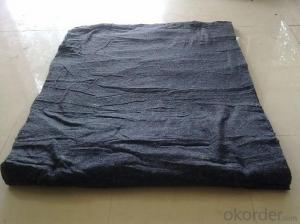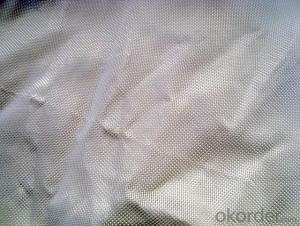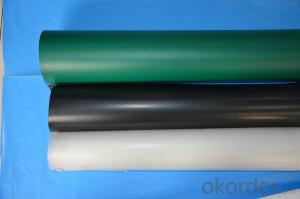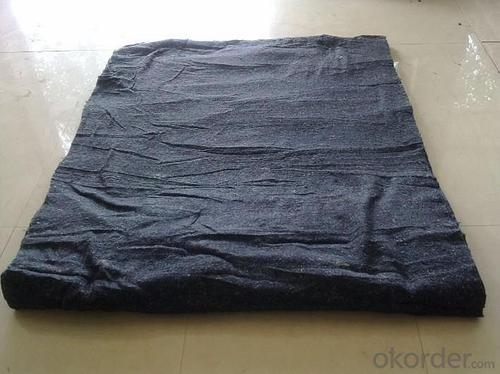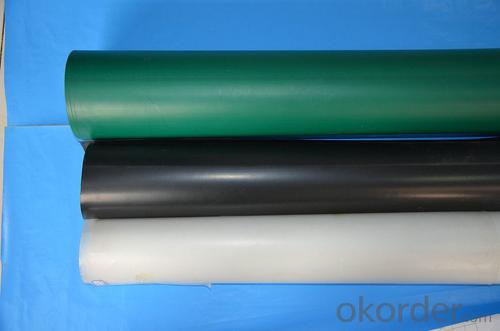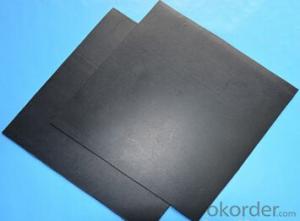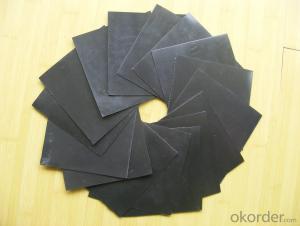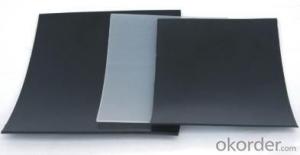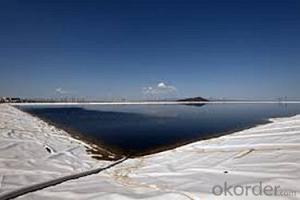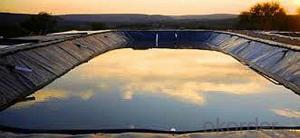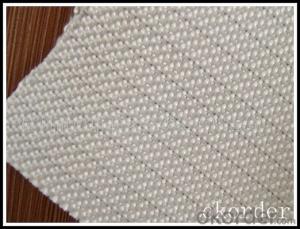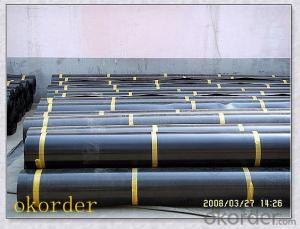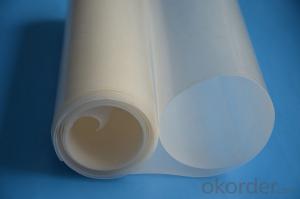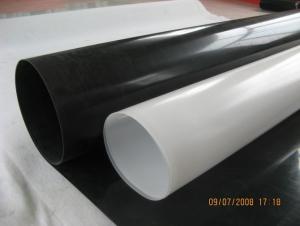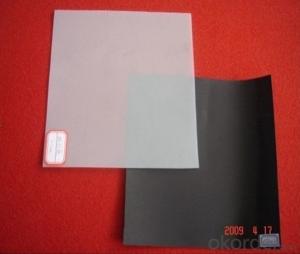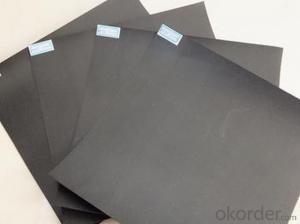High-Density Waterproof Bituminous Geomembrane Roll for Seepage Control
- Loading Port:
- China main port
- Payment Terms:
- TT OR LC
- Min Order Qty:
- 1000 m²
- Supply Capability:
- 10000000 m²/month
OKorder Service Pledge
OKorder Financial Service
You Might Also Like
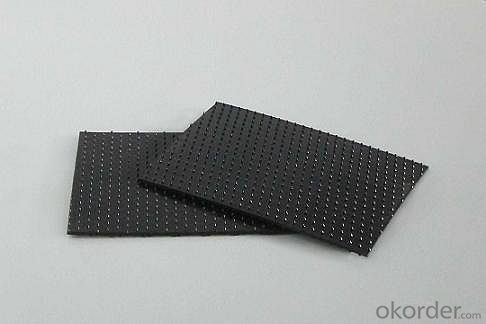
Product Introduction
Color:Black or at your request
Density: 0.94g /cm3
Temperature range: -60oC -- +60oC
Life time: more than 50 years
Executive standard: GB/T 17643-2011
Features: Excellent environment stress resistant cracking performance and chemical erosion resistance.
Big scope of application temperature and long service life.
Applicable to river dams, tunnels, drainage bank seepage, metallurgy and chemical industry pollution prevention, construction, transportation, environmental protection works.
PE film thickness: 0.2mm-0.8mm Product Specifications: Width 4m-6m, weight 300g/m2-2400g/m2.
Our Service
1.On a regular basis or as per your request,we entrust national testing agencies to conduct quality inspections
2. Strictly in accordance with the ISO9001-2008 international quality system standard,we monitor and manage the whole process throughout production,quality testing,and measurement to ensure product quality
3. For quality-related construction delay or substandard construction(except for damage or losses due to customer’s responsibility or irresistible natural disasters),we have refunding,replacement,and repair services.We will respond to customers’ feedbacks on quality issues within 24 hours.
FAQ:
Q: What kind of payments does jenor support?
A: T/T, L/C, Cash are accepted.
Q: Do you charge for the samples?
A: Accordeing to our company policy, the samples are free, we only charge the freight fee. And we will return the freight fee during the next order.
Q: Can you produce according to customers' design?
A: Sure, we are professional manufacturer, OEM and ODM are both welcome.
Q: Do you have other products?
A: Yes, please check the pictures:
- Q: How do geomembranes prevent seepage in reservoirs?
- Geomembranes prevent seepage in reservoirs by providing a impermeable barrier that prevents water from leaking through the reservoir's base or sides. This synthetic lining material is installed beneath or around the reservoir, effectively sealing it and reducing the risk of water loss or contamination due to seepage.
- Q: Are geomembranes suitable for use in desalination plants?
- Yes, geomembranes are suitable for use in desalination plants. They have excellent chemical resistance, durability, and impermeability properties, making them suitable for containing and preventing the leakage of saline water. Additionally, geomembranes can be used for lining evaporation ponds, brine storage areas, and other areas in desalination plants, ensuring efficient and reliable operations.
- Q: What is the installation technology of soft membrane?
- When installing the soft membrane, the first is to install the four angles of A, B, C, D, then the diagonal pull point installation, finally all installation. The installation sequence: 1. Before the entering of the soft film smallpox, the site must be electrified and without construction waste. 2. The deal with the bottom of the piamater ceiling should be fit for the installation conditions, such as the installation of the steel and so on; it must be cleaned. 3. All the installation of the lights must be according to the requirement of us. We should ensure all of the circuit to be electrified. If there are any lamp not lighting up before installing the soft film, it should be adjusted and repaced in time. The interior hidden lights should be painted with white paints so as to get a better effect. 4. The air conditioning and fire pipes must be arranged in advance and debug to keep it operating well. After the installation of the air inlet, spray head, and smoke sensor, all of them should meet the requirements of us. 5. After the installation of the piamater ceiling is completed, for example, the paint should repair the gypsum board and should not touch the soft film smallpox.
- Q: Can geomembranes be used for agricultural irrigation?
- Yes, geomembranes can be used for agricultural irrigation. They are often used as liners in irrigation canals, reservoirs, and ponds to prevent water seepage and maximize water efficiency in agricultural operations.
- Q: Can geomembranes be used in agricultural waste management?
- Yes, geomembranes can be used in agricultural waste management. They are commonly used as liners in waste storage facilities, such as manure storage ponds or lagoons, to prevent leakage and protect the surrounding environment from contamination. Geomembranes effectively contain and control the waste, ensuring proper management and disposal of agricultural waste.
- Q: How do geomembranes contribute to erosion control on slopes?
- Geomembranes contribute to erosion control on slopes by providing a barrier that prevents water infiltration into the soil. This helps to reduce the amount of surface runoff, which is a major cause of erosion. Additionally, geomembranes can enhance the stability of slopes by providing reinforcement and preventing soil movement.
- Q: Are geomembranes resistant to UV degradation?
- Yes, geomembranes are generally resistant to UV degradation. They are designed to withstand prolonged exposure to ultraviolet (UV) radiation from the sun without significant deterioration or damage. However, the extent of UV resistance can vary depending on the specific material and manufacturing process used to create the geomembrane.
- Q: What are the considerations for geomembrane selection in hydraulic structures?
- When selecting a geomembrane for hydraulic structures, several considerations need to be taken into account. These include the compatibility of the geomembrane material with the specific hydraulic environment, such as the pH level and temperature of the water. The geomembrane's durability, resistance to punctures or tears, and ability to withstand UV exposure are also important factors to consider. Additionally, the geomembrane's installation requirements, cost-effectiveness, and compliance with regulatory standards should be evaluated.
- Q: What are the features of the protective film of floor in decoration?
- 。Construction techniques are as follows. 1 anti-drape technique, 2 anti-warp technique, 3 anti-scratch technique, 4 grounding cover technique, 5 the technique that integrates adhesive and film 6 the wiping off air bubble technique 7, free rotation technique, 8 safety lift-off technique, 9 durable recovery technique. Household colourful film is a home decoration material with new concept. it can be stuck on floor tiles, furnitures, glasses, all kinds of table and household appliances in a simple and convenient way. It has unique gum technology and is easy to use. It can be stuck on the cement walls immediately without shoveling the wall and moving the earth. It will not be burned when catching fire and will not be damaged when soaked in water. The price of it is affordable and it can greatly change the home to in a small sum of momey. With six functions and thousands of styles, it is suitable for all kinds of people and covers all aspects of decoration.
- Q: Which kind of cloth of the mobile phone sticker wipers?
- Mobile phone film cloth is non-woven fabrics and non-woven is a new generation of environmentally friendly materials with moisture-proof, breathable, flexibility, lightweight, non combustion, easy decomposition, non-toxic non irritating, rich color, low price and recycle, which is composed of the directional or random fiber. It uses the polypropylene (PP texture) pellets as the raw materials, which is produced by melting in high temperature, spinning, spreading steel and hot rolling. Because it has the appearance and some properties of cloth, it is called the cloth.
Send your message to us
High-Density Waterproof Bituminous Geomembrane Roll for Seepage Control
- Loading Port:
- China main port
- Payment Terms:
- TT OR LC
- Min Order Qty:
- 1000 m²
- Supply Capability:
- 10000000 m²/month
OKorder Service Pledge
OKorder Financial Service
Similar products
Hot products
Hot Searches
Related keywords
